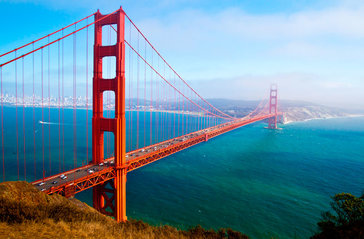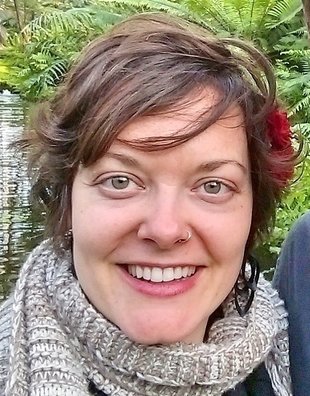 John 16:12-15 Sermon snippets ...Israelite altars, like many other cultures’ altars, were a place to sacrifice and burn animals and other food. By burning the food, the smoke took the food to God so that the people could share a meal with God. This ritual bridged the mysterious chasm between people and God through smoke’s ability to be both here and beyond – isn’t that beautiful? We can make a mistake, when we look back at our faith ancestors, of thinking them superstitious or silly. Sharing a meal with God through smoke that is both here and beyond is profound. For thousands of years Israelites built altars throughout the Holy Land, we read of Abraham and Jacob and Moses building altars to mark places they encountered God. But the Israelites were often nomadic, and they longed to feel God’s presence with them always and everywhere, so they made a traveling home for God, the Tabernacle, where they kept the Ark of the Covenant. And once the people settled down, God settled down too. And they built the Temple. It was destroyed and rebuilt, and the Temple was the bridge to God for centuries. The edges of the Temple were available to anyone, to non-Jews. Next were places only Jews were allowed. Then only men were allowed. Then only priests were allowed. Finally, only the High Priest was allowed into the Holy of Holies, the inner chamber of the Temple that was God’s home. It seems like a paradox, but in order for the people to have the connection they wanted to have to God, they developed, or at least abided by, a system in which the fewer people who could approach God, the more God’s holiness was honored. But always there’s a tension between embracing God’s mysterious, ethereal nature, and longing to embrace God. This God who had taken the form of angels, a burning bush, ferocious storms, was now brought close through a special home in the Temple. This place was an ultimate bridge to God, mediated by the High Priest, who himself was another bridge to God. But what happens when we get too attached to the bridges? Could we focus so much on the bridge that we end up farther away from God? Time after time, the bridges we build to get close to God become boundaries. The absolute mystery of the Divine is hopelessly ethereal, so we build sturdy, intricate bridges. But these bridges are not God, and these bridges will inevitably fail. Temple priests might be corrupt. Contemporary priests might abuse children. Temples can be destroyed. No bridge to God is eternal, but God is eternal. Any bridge can become a boundary. Conflict over who the Pope is can become a war. Conflict over who gets to be priests and pastors, who gets to bridge us to God, splits churches. Rituals, theology, prayer, the work of the church, are bridges to God. Some are complicated like the Catholic rosary, and its complexity reminds us how impossible it is to encapsulate God. But some of us will eventually forget that God is the point, not the ritual or words. The energy we spend on determining the “right” way to practice rituals or understand theology or pray can leave us feeling farther from God than ever, and our bridges become boundaries. God is beyond our knowing, and God is also within our being. With that paradox, no wonder we keep building bridges that become boundaries – our bridges will never lead to the fullness of God. When we focus on the unknowableness of God, God becomes so mysterious and ineffable that God floats away like mist – how do we talk to mist? That’s unsatisfying, so we find tangible representations of God, in spiritual leaders or artifacts. Then, when God becomes so immediate and intimate, when God lives within us as humans, God can become the same as us and we face another trap – if we are God than does God exist? The Trinity is one answer to this conundrum – held within God is the elusive mystery of the Holy Spirit, and the intimate person of Jesus. Jesus brought God close through his own body, and even through his language. Jesus wasn’t the first person to call God “father,” but he made such a habit of it that “Father” has been a dominant metaphor for God ever since. The meaning we give the person of Jesus, the meaning we find in the name “Father” speak to our longing for an intimate connection with the mystery of God. Of course, the bridge of Jesus and the bridge of “Father God” are boundaries to many of us for all sorts of reasons. We will lose a lot when we reject a bridge – the familiar way of saying the Lord's Prayer or beloved hymns that use the name “Father.” But we are creative people and we adapt.... Remember when Jesus meets a Samaritan woman at the well in John chapter 4? That's a provocative story – Jesus and the woman break cultural taboos by talking across gender and culture. And they have a theological conversation. The woman says, " Our ancestors worshiped on this mountain, but you Jews claim that the place where we must worship is in Jerusalem.” Jesus replies, “believe me, a time is coming when you will worship God neither on this mountain nor in Jerusalem....God is spirit, and those who worship God must worship in spirit and in truth.” And we read later in the book of John "the Spirit will guide us into all the truth." Isn't it interesting, that Jews and Samaritans were arguing over the right way to worship 2000 years ago, and today it seems pretty silly. Just think, 2000 years from now, what will people look back on our conflicts and shake their heads at? The altar changed over time in Judaism, just like it's been changing in Christianity. At one time the altar was against the wall (like it is here) and the priest put his back to the people as he performed sacred rituals on their behalf, often speaking a language they couldn’t understand, namely Latin. The people were bridged to God through this priest, even through the mystery and secrecy of the mass, but this set-up eventually became a boundary, and now priests face the people and usually speak a language they all understand. In many churches we’ve gone even further. We say in the Church of the Brethren that all members are ministers, and we often serve one another communion. Not only clergy come to our altar. And usually for Brethren, we share communion around the Love Feast table, absolutely communitizing communion. But our bridges, too, will become boundaries....
2 Comments
Tom Topping
6/2/2016 09:50:46 am
Anna Lisa, this is a really refreshing, revealing and insightful piece of writing you have here. Thanks for sharing your amazing intellect!
Reply
Keith Betz
6/2/2016 07:27:24 pm
Interesting how our bridges and boundries have changed over the years,
Reply
Leave a Reply. |
Archives
January 2022
|

 RSS Feed
RSS Feed